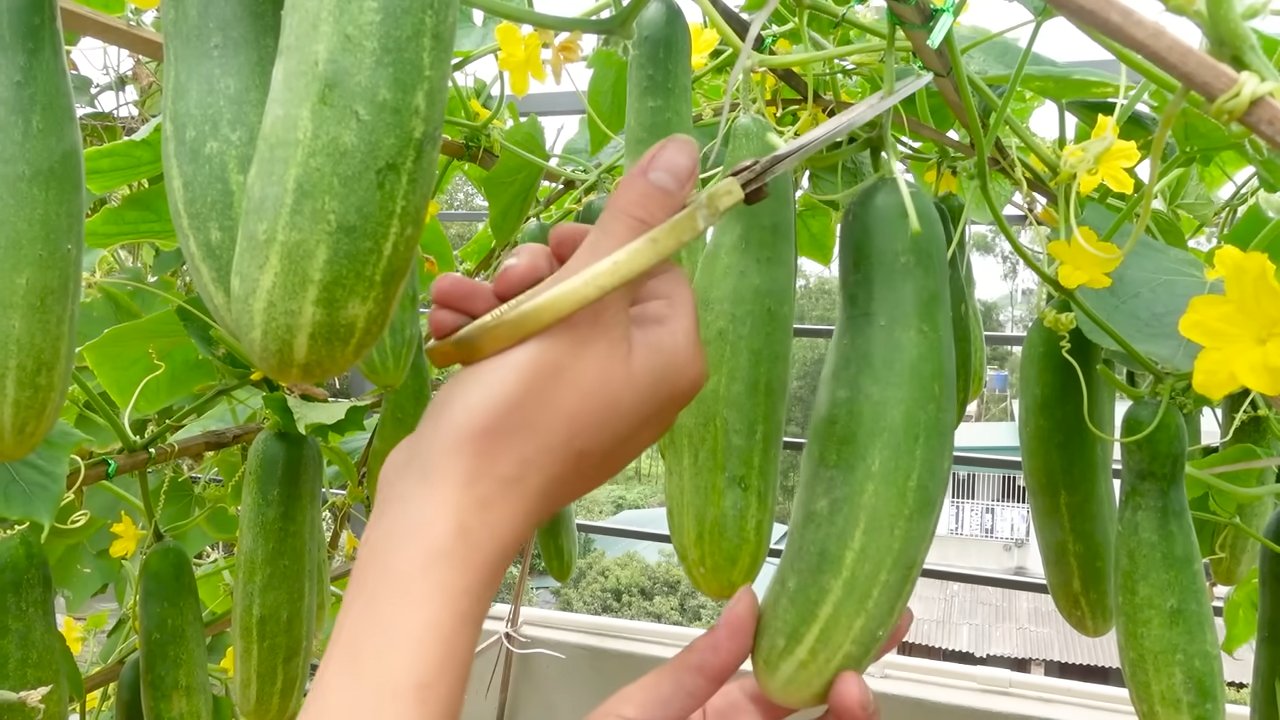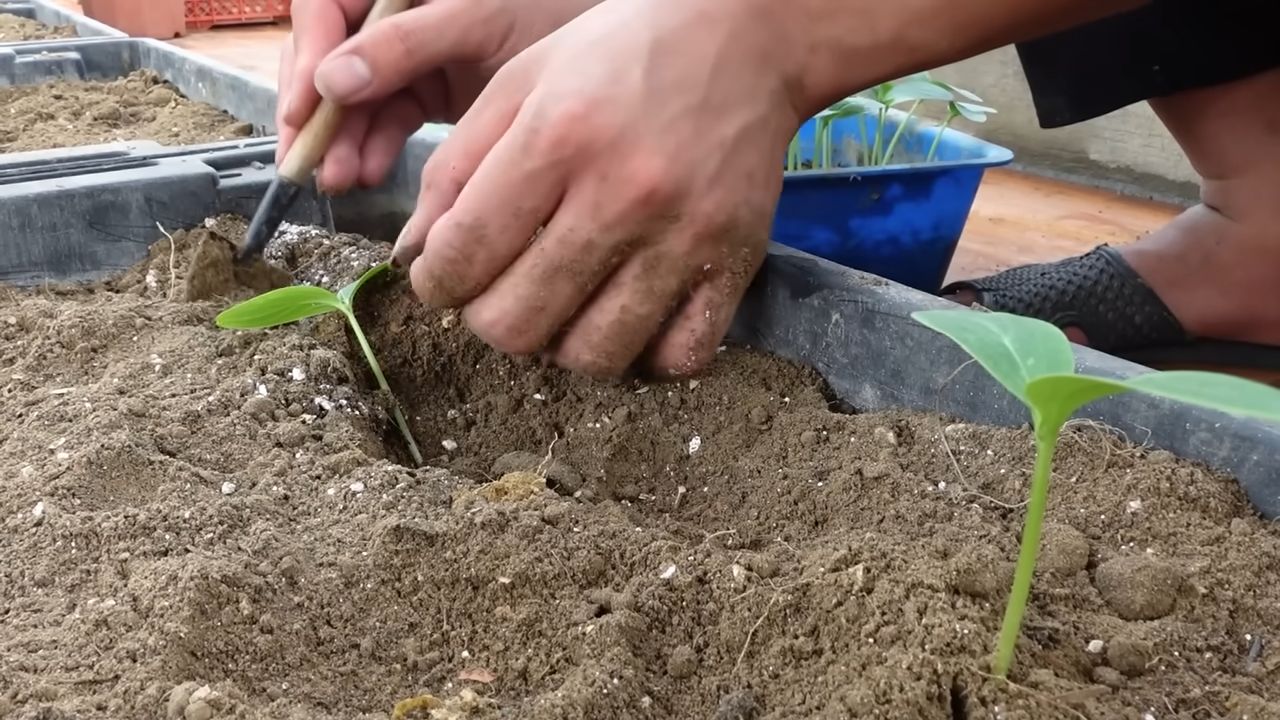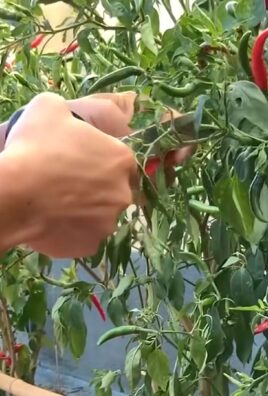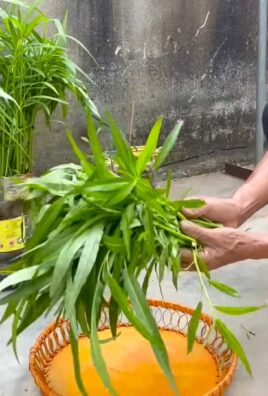Growing Cucumbers Indoors might seem like a challenge reserved for seasoned gardeners, but I’m here to tell you it’s totally achievable, even if you’re a complete beginner! Forget those expensive grocery store cucumbers that lack flavor; imagine biting into a crisp, juicy cucumber you nurtured yourself, right in your own home.
For centuries, cultivating cucumbers has been a vital part of various cultures, from ancient Egypt where they were prized for their refreshing qualities, to the sprawling gardens of the Roman Empire. While traditionally grown outdoors, the desire for fresh produce year-round has spurred innovative techniques like indoor gardening.
Why should you bother growing cucumbers indoors? Well, think about it: you control the environment, shielding your precious plants from pests, unpredictable weather, and diseases that can wreak havoc on outdoor crops. Plus, it’s incredibly rewarding! There’s something truly special about watching a tiny seed transform into a thriving plant that provides you with delicious, healthy food. This DIY guide will equip you with all the essential tricks and hacks to successfully cultivate these delightful veggies within the comfort of your home. Get ready to embark on a fun and fruitful gardening adventure!

Growing Cucumbers Indoors: Your Comprehensive DIY Guide
Hello, dear garden friends! Are you tired of short summers and want to harvest fresh cucumbers all year round? Then you’ve come to the right place! I’ll show you how to successfully grow your own cucumbers indoors. It’s easier than you think and incredibly fun!
Why Grow Cucumbers Indoors?
- Extended Harvest Season: Enjoy fresh cucumbers all year long, regardless of the weather outside.
- Controlled Conditions: Protect your plants from pests, diseases, and extreme weather.
- Space-Saving: Even small apartments or balconies have room for a few cucumber plants.
- Sustainability: Reduce your ecological footprint by growing your own food.
- Satisfaction: It’s simply a great feeling to harvest and eat your own cucumbers!
What You Need: The Materials List
Before we get started, here’s a list of everything you’ll need for your indoor cucumber garden:
- Cucumber seeds: Choose a variety that is suitable for indoor growing. Bush or mini-cucumber varieties are often a good choice. I recommend varieties like “Spacemaster,” “Bush Champion,” or “Patio Snacker.”
- Seed starting pots: Small pots or seed trays for starting the seeds.
- Seed starting mix: Special soil for starting seedlings that is low in nutrients and loose.
- Large pots: Pots with a diameter of at least 30 cm (12 inches) for the mature plants.
- Potting soil: High-quality potting soil with good drainage.
- Plant stakes or a trellis: Cucumbers are climbing plants and need support.
- Grow light (optional): If you don’t have enough sunlight, a grow light is a good investment.
- Fertilizer: Liquid fertilizer for vegetables or tomatoes.
- Spray bottle: For moistening the leaves.
- Watering can: For watering the plants.
- Scissors or a knife: For harvesting the cucumbers.
Phase 1: Sowing – The Start of Your Cucumber Adventure
- Prepare the seed pots: Fill the seed starting pots with seed starting mix. Press the soil down lightly.
- Sow the seeds: Place 1-2 seeds in each pot. Cover the seeds with a thin layer of soil (about 1 cm or 0.4 inches).
- Watering: Gently moisten the soil with a spray bottle. The soil should be damp, but not wet.
- Location: Place the seed pots in a warm and bright spot. A temperature of 20-25°C (68-77°F) is ideal.
- Germination: The seeds usually germinate within 7-14 days. Keep the soil moist during this time.
Phase 2: Transplanting – Giving the Seedlings More Space
- Select the strongest seedlings: Once the seedlings have 2-3 true leaves, select the strongest and healthiest ones.
- Prepare the large pots: Fill the large pots with potting soil. Leave a rim of about 5 cm (2 inches) at the top.
- Transplanting: Carefully lift the seedlings out of the seed starting pots. Be careful not to damage the roots.
- Planting: Place the seedlings in the large pots. The top of the root ball should be level with the soil surface.
- Watering: Gently water the plants.
- Location: Place the pots in a bright and warm location.
Phase 3: Care and Growth – How Your Cucumbers Will Thrive
- Watering: Water the cucumbers regularly. The soil should always be slightly moist. Avoid waterlogging. I usually water my cucumbers every 2-3 days, but this depends on the temperature and humidity.
- Fertilizing: Feed the cucumbers every 2-3 weeks with a liquid fertilizer for vegetables or tomatoes. Follow the instructions on the packaging.
- Support: Offer the cucumbers a climbing support. You can use plant stakes or a trellis. Gently guide the shoots along the support.
- Pollination: Cucumbers are not self-pollinating. Outdoors, bees and other insects do this job. Indoors, you have to pollinate them yourself. It’s quite simple:
- Identify male and female flowers: Male flowers have a thin stem, while female flowers have a small, undeveloped fruit right behind the blossom.
- Perform pollination: Take a small paintbrush or cotton swab and transfer pollen from a male flower to a female flower. Repeat this for all female flowers.
- Alternative: You can also cut off a male flower and dab the pollen directly onto the female flower.
- Pruning: Regularly remove the side shoots (suckers) that grow from the leaf axils. This encourages the growth of the main stems and fruit production.
- Ventilation: Ensure good air circulation to prevent fungal diseases. Open windows regularly or set up a fan.
- Observation: Watch for pests and diseases. You can use organic pest control methods if necessary.
Phase 4: The Harvest – The Reward for Your Effort
- When to harvest: The cucumbers are ready to harvest when they have reached the desired size and color. The exact harvest time depends on the variety.
- Harvesting: Cut the cucumbers with scissors or a knife. Be careful not to damage the plant.
- Regular harvesting: Harvest the cucumbers regularly to stimulate more fruit production.
Additional Tips for Success
- Light: Cucumbers need a lot of light. If you don’t have enough sunlight, use a grow light. I’ve had very good experiences with LED grow lights.
- Temperature: The ideal temperature for cucumbers is between 20 and 25°C (68-77°F). Avoid extreme temperature fluctuations.
- Humidity: Cucumbers like high humidity. Spray the leaves regularly with water.
- Pests: Watch out for pests like aphids or spider mites. If infested, you can use organic pest control methods.
- Diseases: Watch for diseases like powdery mildew. Ensure good ventilation and avoid waterlogging.
- Variety selection: Choose a cucumber variety that is suitable for indoor growing. Bush or mini-cucumber varieties are often a good choice.
- Patience: Growing cucumbers indoors requires some patience. But it’s worth it!
Common Problems and Solutions
No fruit: If your cucumbers aren’t producing fruit, it could be due to a lack of pollination. Perform pollination manually.
Yellow leaves: Yellow leaves can be a sign of nutrient deficiency, overwatering, or pest infestation. Check your watering and fertilizing routine and look for pests.

Conclusion
So, there you have it! Growing cucumbers indoors might seem like a daunting task at first, but with a little planning, the right setup, and consistent care, you can enjoy fresh, crisp cucumbers straight from your home, regardless of the season. This DIY approach to cucumber cultivation offers a multitude of benefits, from controlling pests and diseases to extending your growing season and enjoying the satisfaction of nurturing your own food.
Why is this a must-try? Because it empowers you to take control of your food source, reduces your reliance on store-bought produce (often laden with pesticides), and provides a rewarding and educational experience. Imagine the delight of harvesting your first cucumber, knowing you nurtured it from seed to fruit within the comfort of your own home. It’s a truly special feeling!
But don’t stop there! Experiment with different cucumber varieties to find your favorites. Bush varieties like Spacemaster or Patio Snacker are particularly well-suited for indoor growing due to their compact size. You can also explore different trellising methods to optimize space and support your growing vines. Consider adding companion plants like basil or marigolds to deter pests naturally.
Ready to embark on your indoor cucumber growing adventure? We encourage you to give this DIY trick a try. Start small, learn as you go, and don’t be afraid to experiment. The journey is just as rewarding as the destination.
And most importantly, share your experience! We’d love to hear about your successes, challenges, and any tips you discover along the way. Post photos of your indoor cucumber garden, share your favorite recipes using your homegrown cucumbers, and connect with other indoor gardening enthusiasts. Let’s build a community of indoor cucumber growers and inspire others to embrace the joys of homegrown produce. Growing cucumbers indoors is not just a gardening project; it’s a step towards a more sustainable and fulfilling lifestyle. So, grab your seeds, prepare your pots, and get ready to enjoy the delicious taste of homegrown cucumbers all year round!
Frequently Asked Questions (FAQs)
What are the best cucumber varieties for indoor growing?
Choosing the right cucumber variety is crucial for success when growing indoors. Bush or compact varieties are generally preferred because they require less space and are easier to manage. Some excellent options include:
* Spacemaster: A popular bush variety known for its compact size and high yield. It produces dark green, 7-8 inch cucumbers.
* Patio Snacker: Another excellent bush variety that’s perfect for containers. It produces small, sweet cucumbers ideal for snacking.
* Bush Champion: A reliable bush variety that produces good-sized cucumbers with a mild flavor.
* Little Leaf: This variety has smaller leaves than other cucumber plants, making it a great choice for indoor growing where space is limited.
While vining varieties can also be grown indoors, they require more extensive trellising and space. If you choose a vining variety, be sure to provide a sturdy trellis and prune regularly to control its growth.
How much light do indoor cucumbers need?
Cucumbers are sun-loving plants and require at least 6-8 hours of direct sunlight per day to thrive. If you don’t have a sunny window that provides enough light, you’ll need to supplement with artificial grow lights. LED grow lights are a great option because they are energy-efficient and provide the full spectrum of light that plants need. Position the grow lights about 6-12 inches above the plants and adjust as they grow.
What type of soil is best for growing cucumbers indoors?
Cucumbers prefer well-draining, nutrient-rich soil. A good potting mix for indoor cucumbers should contain a blend of peat moss, perlite, and vermiculite. You can also add compost or other organic matter to improve the soil’s fertility and drainage. Avoid using garden soil, as it can be too heavy and may contain pests or diseases.
How often should I water my indoor cucumber plants?
Water your cucumber plants regularly, keeping the soil consistently moist but not waterlogged. Check the soil moisture level daily and water when the top inch of soil feels dry to the touch. Avoid overwatering, as this can lead to root rot. During hot weather, you may need to water more frequently.
How do I pollinate my indoor cucumber plants?
Cucumbers are typically pollinated by bees, but since you’re growing them indoors, you’ll need to hand-pollinate them. Use a small paintbrush or cotton swab to transfer pollen from the male flowers to the female flowers. Male flowers have a long, thin stem, while female flowers have a small cucumber-like structure behind the flower. Pollinate your cucumber plants in the morning, when the pollen is most viable.
What are some common pests and diseases that affect indoor cucumbers?
Common pests that can affect indoor cucumbers include aphids, spider mites, and whiteflies. Regularly inspect your plants for signs of infestation and take action promptly. You can use insecticidal soap or neem oil to control these pests. Common diseases that can affect indoor cucumbers include powdery mildew and fungal infections. Ensure good air circulation around your plants and avoid overwatering to prevent these diseases.
How do I fertilize my indoor cucumber plants?
Cucumbers are heavy feeders and require regular fertilization. Use a balanced fertilizer with a ratio of 10-10-10 or 14-14-14. Fertilize your plants every 2-3 weeks, following the instructions on the fertilizer label. You can also use organic fertilizers like compost tea or fish emulsion.
How long does it take for cucumbers to mature indoors?
The time it takes for cucumbers to mature indoors depends on the variety and growing conditions. Generally, it takes about 50-70 days from planting to harvest. You can start harvesting cucumbers when they reach the desired size and are firm to the touch.
Can I grow cucumbers indoors year-round?
Yes, you can grow cucumbers indoors year-round, provided you have the right setup and growing conditions. You’ll need to provide adequate light, water, and nutrients to keep your plants healthy and productive.
What are some tips for maximizing cucumber yield indoors?
To maximize cucumber yield indoors, consider the following tips:
* Choose a high-yielding variety.
* Provide adequate light and nutrients.
* Hand-pollinate your plants regularly.
* Prune your plants to encourage branching and fruit production.
* Harvest cucumbers regularly to encourage more fruit production.
* Maintain optimal temperature and humidity levels.
By following these tips, you can enjoy a bountiful harvest of fresh, homegrown cucumbers all year round.




Leave a Comment